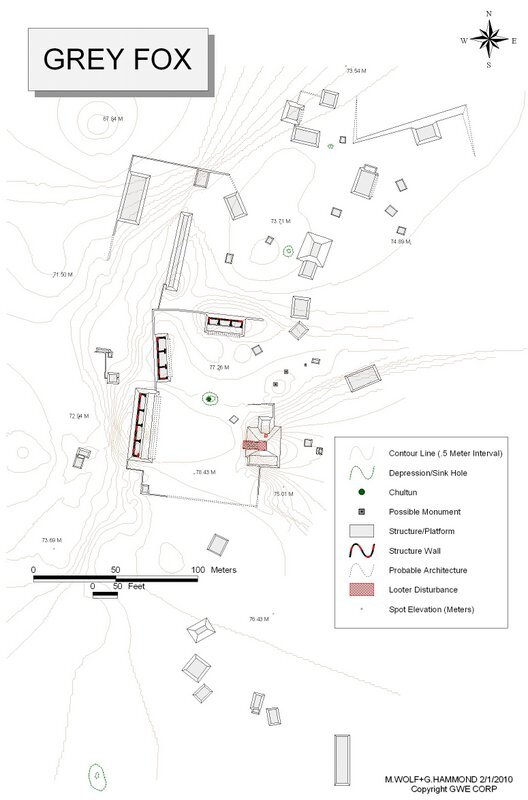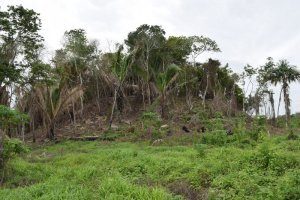
Tropical and picturesque, it is a place that tourists would likely want to wander through. Known as ‘Tamarindo’, it takes its name from the numerous tropical trees that grow there. Situated next to the beautiful and immense New River Lagoon in northern Belize, it also features remains of an ancient Maya settlement. The site, not far from the better-known great Maya center of Lamanai, remains largely unexplored and unexcavated by archaeologists. Situated as it is in a location that gave its ancient inhabitants strategic access to important coastal trade routes, there is little doubt that archaeologists and other scientists will one day uncover significant finds in this place, once full-scale excavations begin.
But those excavations wouldn’t be possible if it were not for the recent purchase of 83.6 acres of land along the Lagoon by members of the Board of the Maya Research Program (MRP). Tamarindo was an important part of that purchase. It is the latest in a series of land acquisitions that the MRP hopes will shelter and conserve ecology and invaluable archaeological treasures that otherwise would soon be lost or destroyed as developers clear land for agricultural purposes. Numerous sites in this area have already been negatively impacted by agricultural development.
“We intend to conserve the site and it’s environment for future data recovery,” says Colleen Hanratty, a member of the MRP Board of Directors and co-director of MRP’s Blue Creek Archaeological Project. “There are easily at least a dozen plus large structures on site (8-10 m tall), and we expect to identify numerous more once we survey the property completely, including within the [jungle] canopy that has not been impacted as severely.” But for now, she emphasizes, “our greatest concern is to prevent its destruction, as it was in imminent danger.”
The success of the purchase was due initially in no small measure to friendly connections among the local populace. “Obtaining this property was due to MRP’s relationship with local communities,” she added. “One of our excavation associates from a nearby village brought the property to MRP’s attention and facilitated it’s purchase. Without the support of local communities and informant data, we would not have been aware of this opportunity.”
_________________________________________
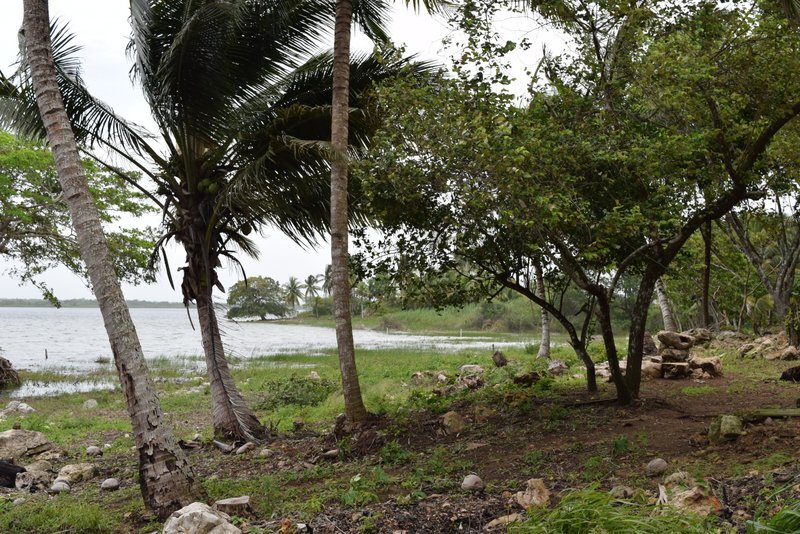 Standing on site at Tamarindo – This is a view of the New River Lagoon (facing northwest). Courtesy Maya Research Program
Standing on site at Tamarindo – This is a view of the New River Lagoon (facing northwest). Courtesy Maya Research Program
________________________________________________________
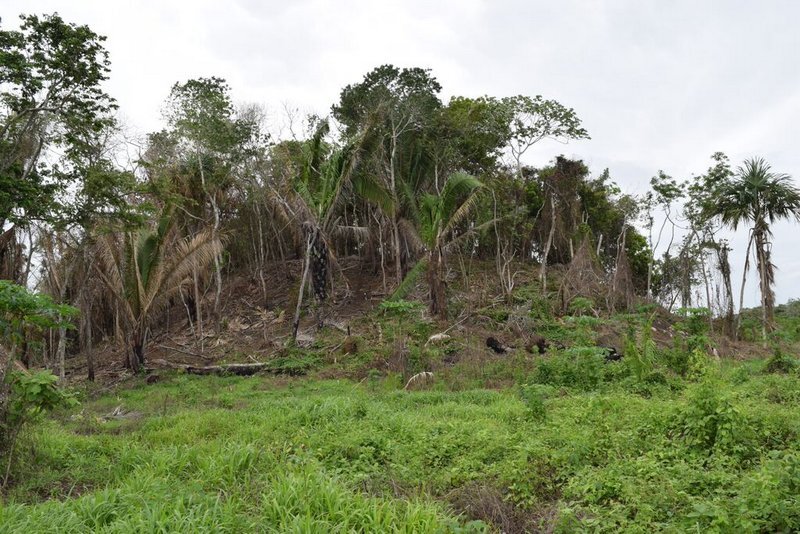 One of the large range structures at Tamarindo. It is approximately 10m high and 40m long. This structure is on the edge of agricultural clearing. Courtesy Maya Research Program
One of the large range structures at Tamarindo. It is approximately 10m high and 40m long. This structure is on the edge of agricultural clearing. Courtesy Maya Research Program
____________________________________________________
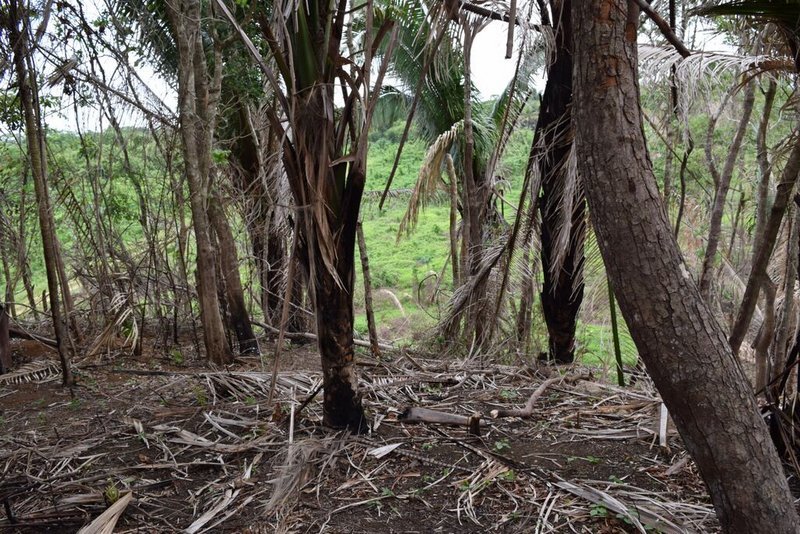 A view from atop the large structure shown above. The brush has been cleared out by slash and burn agricultural practices. Courtesy Maya Research Program
A view from atop the large structure shown above. The brush has been cleared out by slash and burn agricultural practices. Courtesy Maya Research Program
__________________________________________________
Such connections were also instrumental in the 2011 MRP purchase of 90 acres of land that made up the core of Grey Fox, another endangered ancient Maya site. That site (named after a type of fox that is indigenous to the area), is located on the edge of a 500 sq. km., low-lying un-impacted forest area known as the Bajo Alcranes. The site contains two large public plazas, each about 100 x 100 meters in size, dominated by a large eastern pyramid and large royal elite residences and viewing galleries, and, adjacent to the plazas, a probable ballcourt. The area in which the site is located is also home to a large concentration of monkeys, tropical birds, and other wildlife, as well as trees and plant-life that help to make up the important biosphere of the area. MRP recently acquired 35 more acres for Grey Fox, which encompasses the elite residences associated with the site core. “We have done extensive mapping in the area as well as a biological inventory of the trees in the area,” said Hanratty. “This year we have submitted 2 grants in conjunction with our colleague in Australia, Dr. Alex Parmington, to begin excavations at the site in 2016.”
_________________________________________
Above, site map of Grey Fox Maya center. Courtesy Thomas Guderjan and Maya Research Program.
______________________________________________________________
MRP continues to raise funds to support these critical purchases. “While the purchase of Tamarindo is complete (paid for), the MRP has taken a loan to purchase [the additional 35 acres of] Grey Fox,” added Hanratty. “We are looking to fund raise 10K from the public for this settlement zone land acquisition, as we did in 2011 to purchase the site core.”
Individuals interested in helping with this effort may learn more at the MRP website. Interested readers may also contribute to this effort under the Popular Archaeology Adopt-a-Site program.
_________________________________________________________
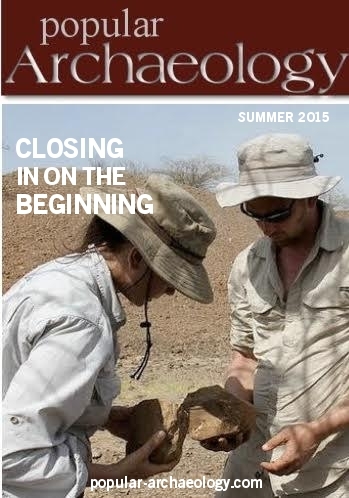 Read more in-depth articles about archaeology with a premium subscription to Popular Archaeology Magazine.
Read more in-depth articles about archaeology with a premium subscription to Popular Archaeology Magazine.
In addition, the latest Popular Archaeology ebook is now available.
______________________________________________
Travel and learn with Far Horizons.
____________________________________________
 Popular Archaeology’s annual Discovery Edition eBook is a selection of the best stories published in Popular Archaeology Magazine in past issues, with an emphasis on some of the most significant, groundbreaking, or fascinating discoveries in the fields of archaeology and paleoanthropology and related fields. At least some of the articles have been updated or revised specifically for the Discovery edition. We can confidently say that there is no other single issue of an archaeology-related magazine, paper print or online, that contains as much major feature article content as this one. The latest issue, volume 2, has just been released. Go to the Discovery edition page for more information.
Popular Archaeology’s annual Discovery Edition eBook is a selection of the best stories published in Popular Archaeology Magazine in past issues, with an emphasis on some of the most significant, groundbreaking, or fascinating discoveries in the fields of archaeology and paleoanthropology and related fields. At least some of the articles have been updated or revised specifically for the Discovery edition. We can confidently say that there is no other single issue of an archaeology-related magazine, paper print or online, that contains as much major feature article content as this one. The latest issue, volume 2, has just been released. Go to the Discovery edition page for more information.
____________________________________________

